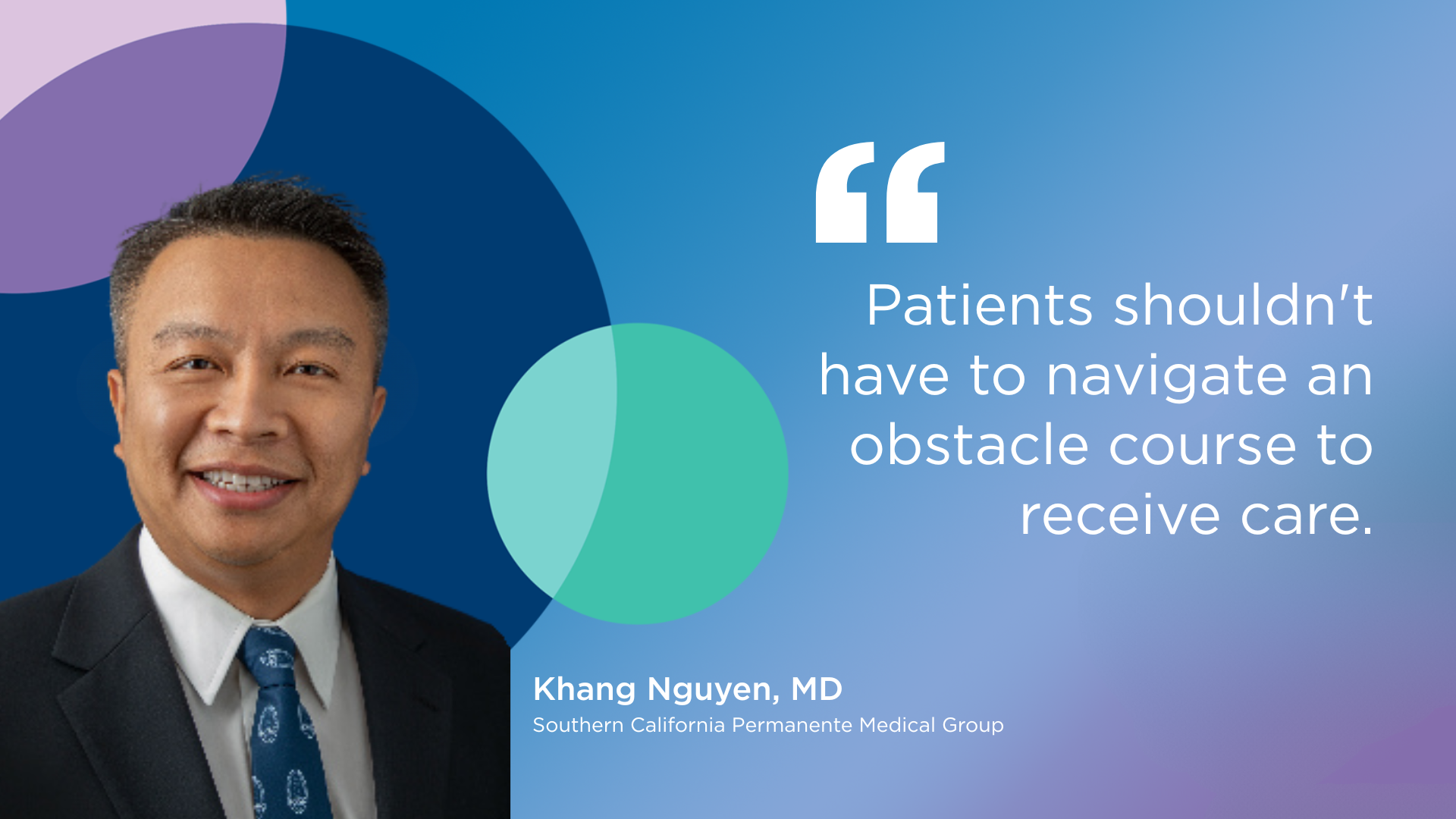Khang Nguyen, MD
Let’s be honest: For all the opportunities that technological advances provide, they can also just as easily create new frustrations. I’d run out of fingers before I could count the number of bad customer service experiences I’ve had with phone or online chatbots, which never seem to have the option I need. What frustrates me most is the lack of basic oversight by human customer service professionals, or an easy way out to them.
Just as we expect convenience, speed, and choice in everyday life (such as choosing bed size when booking a hotel room or selecting a table when making a restaurant reservation), we now expect a similar user experience in healthcare. Patients expect healthcare portals to streamline access to personal health information, facilitate communication with providers, and simplify appointment scheduling. However, these digital tools often fall short, leading to patient frustration.
A new approach: Kaiser Permanente Smart Navigator
Motivated by this observation, our team at Kaiser Permanente in Southern California saw the opportunity to create a new and improved patient navigation portal unlike any other in the American healthcare system. Enter the Kaiser Permanente Intelligent Navigator (KPIN), which leverages physician expertise and advanced artificial intelligence technology to provide patients with a seamless experience as they access care and retrieve health information.
Related story on patient navigation transformation: AI-powered patient portal improves access, safety and patient satisfaction
Powered by natural language processing, a form of artificial intelligence, this tool was incorporated into established workflows and provided 4.9 million patients in the region with a more seamless, timely and personalized experience through their patient portal. It allows patients to describe their healthcare needs and questions in their own words (not through preset menus) and then recommends the most clinically appropriate action. This could range from making an appointment to making a walk-in, requesting a prescription refill, or speaking with a doctor. The KPIN works like a driver and takes patients where they need to go.
Built by doctors, designed for patient safety
We are proud to say that KPIN is a personalized digital customer service platform, designed in collaboration with physicians and clinical operational leaders. Security was a priority when we developed this tool. KPIN closely monitors any signs that a patient is facing a medical emergency. For example, if a patient writes that they are experiencing chest pain, the system recognizes that they require immediate attention rather than a future appointment. The patient will be immediately connected to a nurse to discuss their symptoms and directed to an emergency department, if necessary.
Related AI story: Building trust in healthcare through better AI governance
A recent article in Nature showed that the platform detected urgent medical cases with an accuracy of 97.7% and increased patient satisfaction by 8.6%. Across healthcare, only 3 in 10 patients who try to book appointments online succeed. Meanwhile, more than half of patients who used KPIN made timely and appropriate appointments, allowing them to take a more active role in managing their health and healthcare.
Patients should not have to navigate an obstacle course to receive care. The process (from seeking care to seeing the doctor) should be simple. KPIN is an innovative tool that helps make the entire care process seamless, from the first point of contact to achieving a quality outcome, taking the patient experience into a new era.
Khang Nguyen, MD, is Deputy Executive Medical Director of Care Transformation at Southern California Permanente Medical Group.



